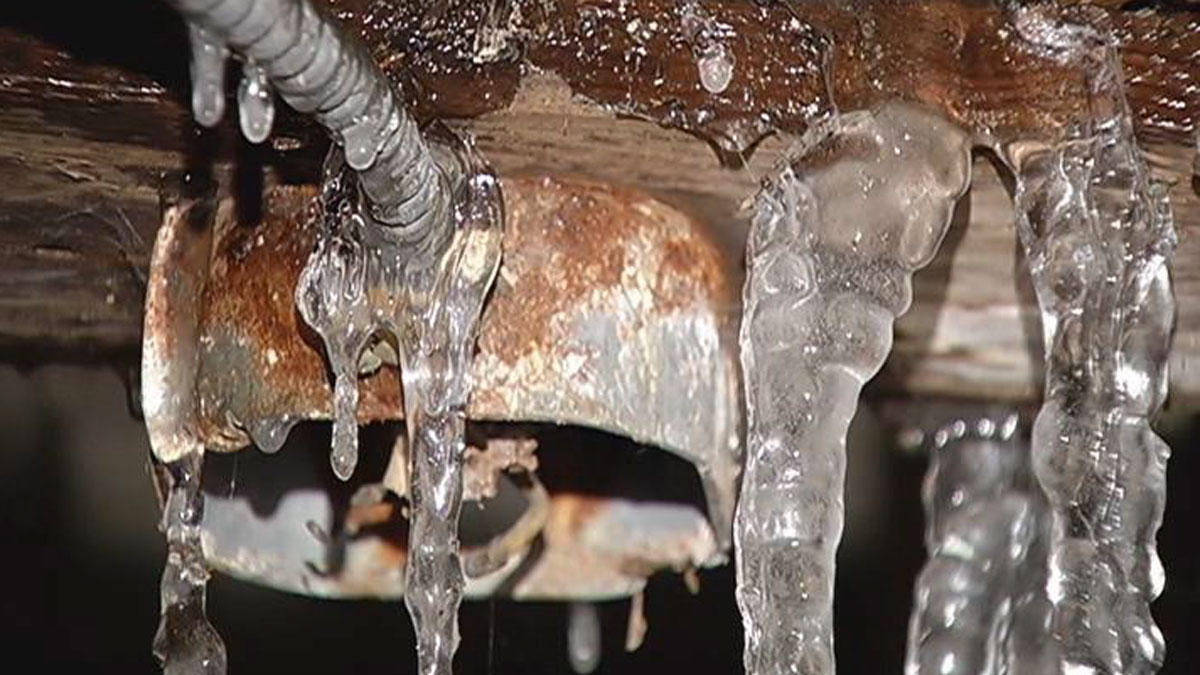Ways to Protect Pipes from Cold Weather: Expert Tips
Ways to Protect Pipes from Cold Weather: Expert Tips
Blog Article
We've noticed this great article about Winter Plumbing Precautions: Preventing Frozen Pipes down the page on the net and concluded it made good sense to relate it with you on this page.

Cold weather can wreak havoc on your plumbing, especially by freezing pipelines. Right here's how to stop it from taking place and what to do if it does.
Introduction
As temperatures drop, the danger of icy pipelines rises, possibly causing expensive repair work and water damages. Recognizing exactly how to stop frozen pipelines is vital for home owners in cool environments.
Understanding Frozen Pipes
What creates pipes to freeze?
Pipes ice up when exposed to temperatures listed below 32 ° F (0 ° C) for extended periods. As water inside the pipes freezes, it increases, putting pressure on the pipeline wall surfaces and potentially creating them to rupture.
Risks and problems
Frozen pipelines can bring about supply of water disturbances, residential or commercial property damage, and expensive repair services. Burst pipes can flooding homes and cause substantial structural damages.
Indications of Frozen Water Lines
Recognizing frozen pipes early can stop them from bursting.
Just how to identify frozen pipes
Seek lowered water circulation from taps, uncommon odors or sounds from pipelines, and noticeable frost on subjected pipelines.
Avoidance Tips
Shielding susceptible pipelines
Wrap pipes in insulation sleeves or make use of heat tape to protect them from freezing temperatures. Focus on pipes in unheated or outside locations of the home.
Home heating strategies
Maintain indoor spaces properly heated up, particularly locations with pipes. Open up cupboard doors to allow cozy air to distribute around pipelines under sinks.
Protecting Outdoor Pipes
Yard pipes and outside taps
Disconnect and drain pipes garden tubes before winter months. Install frost-proof faucets or cover outdoor faucets with insulated caps.
What to Do If Your Pipelines Freeze
Immediate actions to take
If you believe frozen pipelines, keep taps open up to soothe pressure as the ice melts. Use a hairdryer or towels taken in hot water to thaw pipelines gradually.
Long-Term Solutions
Structural adjustments
Take into consideration rerouting pipelines away from exterior walls or unheated areas. Add added insulation to attics, cellars, and crawl spaces.
Updating insulation
Buy top notch insulation for pipes, attics, and walls. Correct insulation helps maintain regular temperature levels and lowers the risk of icy pipelines.
Verdict
Preventing frozen pipelines requires proactive measures and fast responses. By comprehending the reasons, indications, and preventive measures, house owners can safeguard their plumbing throughout cold weather.
6 Proven Ways to Prevent Frozen Pipes and Protect Your Home
Disconnect and Drain Garden Hoses
Before winter arrives, start by disconnecting your garden hoses and draining any remaining water. Close the shut-off valves that supply outdoor hose bibs and leave the outdoor faucet open to allow any residual water to drain. For extra protection, consider using faucet covers throughout the colder months. It’s also important to drain water from any sprinkler supply lines following the manufacturer’s directions.
Insulate Exposed Pipes
Insulating your pipes is an effective way to prevent freezing. Pipe insulation is readily available at home improvement stores and is relatively inexpensive. Pay close attention to pipes in unheated areas such as the attic, basement, crawl spaces, or garage. Apply foam insulation generously to create a buffer against the cold. You can also wrap your pipes in heat tape or thermostat-controlled heat cables for added warmth.
Seal Air Leaks
Inspect your home for any cracks or openings that could let in cold air. Seal any holes around the piping in interior or exterior walls, as well as the sill plates where your home rests on its foundation. Additionally, make sure to keep your garage door closed unless you’re entering or exiting. Leaving it open creates a significant air leak that can lead to frozen pipes.
Allow Warm Air Circulation
During cold snaps, it’s essential to allow warm air to circulate evenly throughout your home. Leave interior doors ajar to promote better airflow. Open kitchen and bathroom cabinets to help distribute heat consistently around the rooms. If you have small children or pets, be sure to remove any household chemicals or potentially harmful cleaners from open cabinets for safety.
Let Faucets Drip
A small trickle of water can make a big difference in preventing ice formation inside your pipes. When temperatures drop significantly, start a drip of water from all faucets served by exposed pipes. This continuous flow helps prevent the water from freezing. Additionally, running a few faucets slightly can relieve pressure inside the pipes, reducing the chances of a rupture if the water inside does freeze.
https://choateshvac.com/6-proven-ways-to-prevent-frozen-pipes-and-protect-your-home/

I found that piece on How to Prevent Your Pipes From Freezing while doing a lookup on the web. Sharing is good. You won't know, you could be doing someone a favor. Thank you for going through it.
Book Now! Report this page